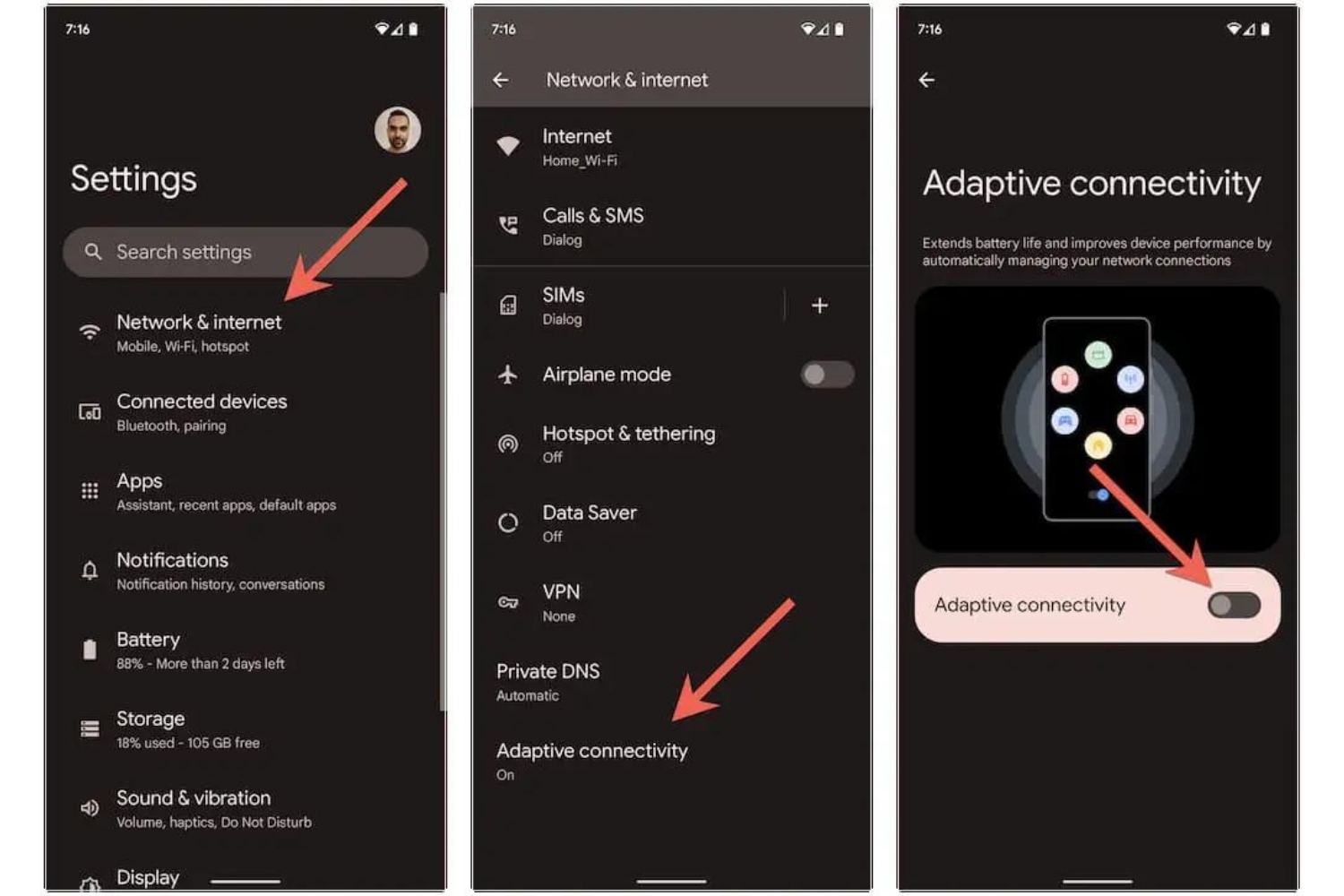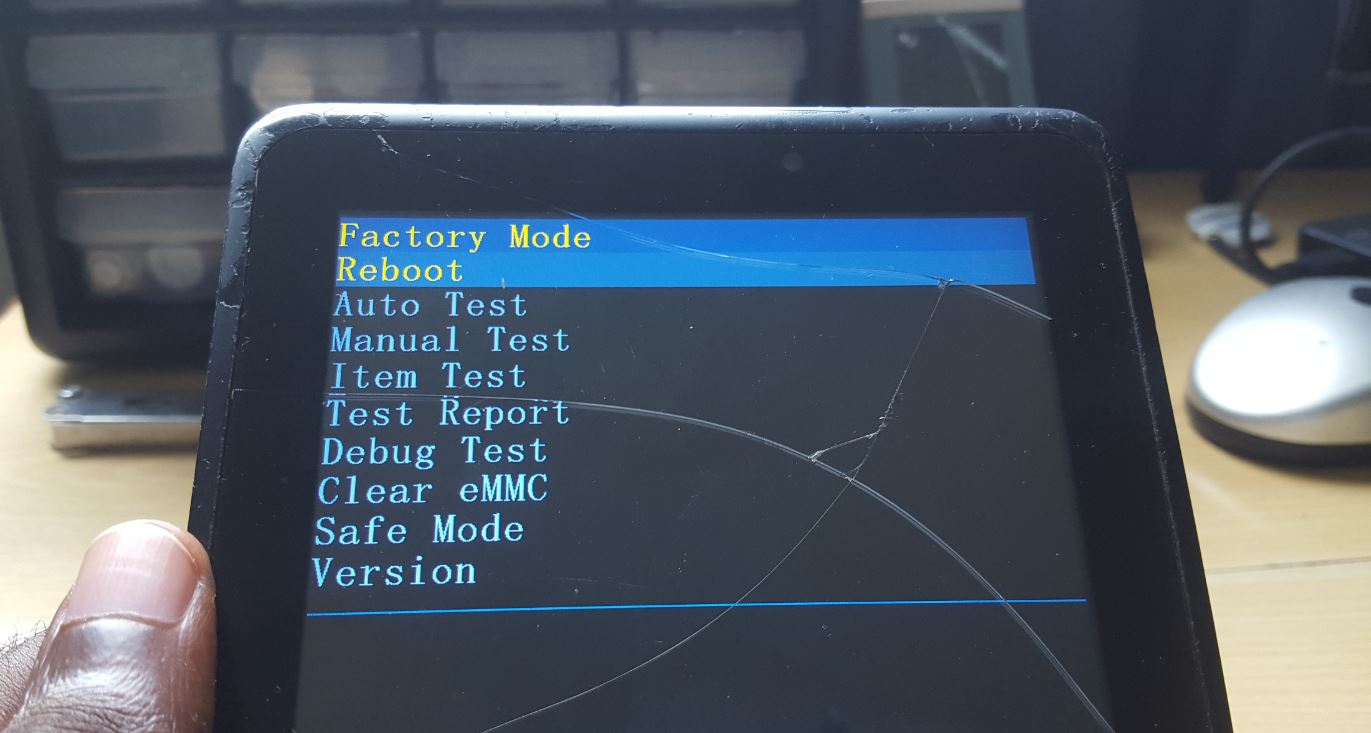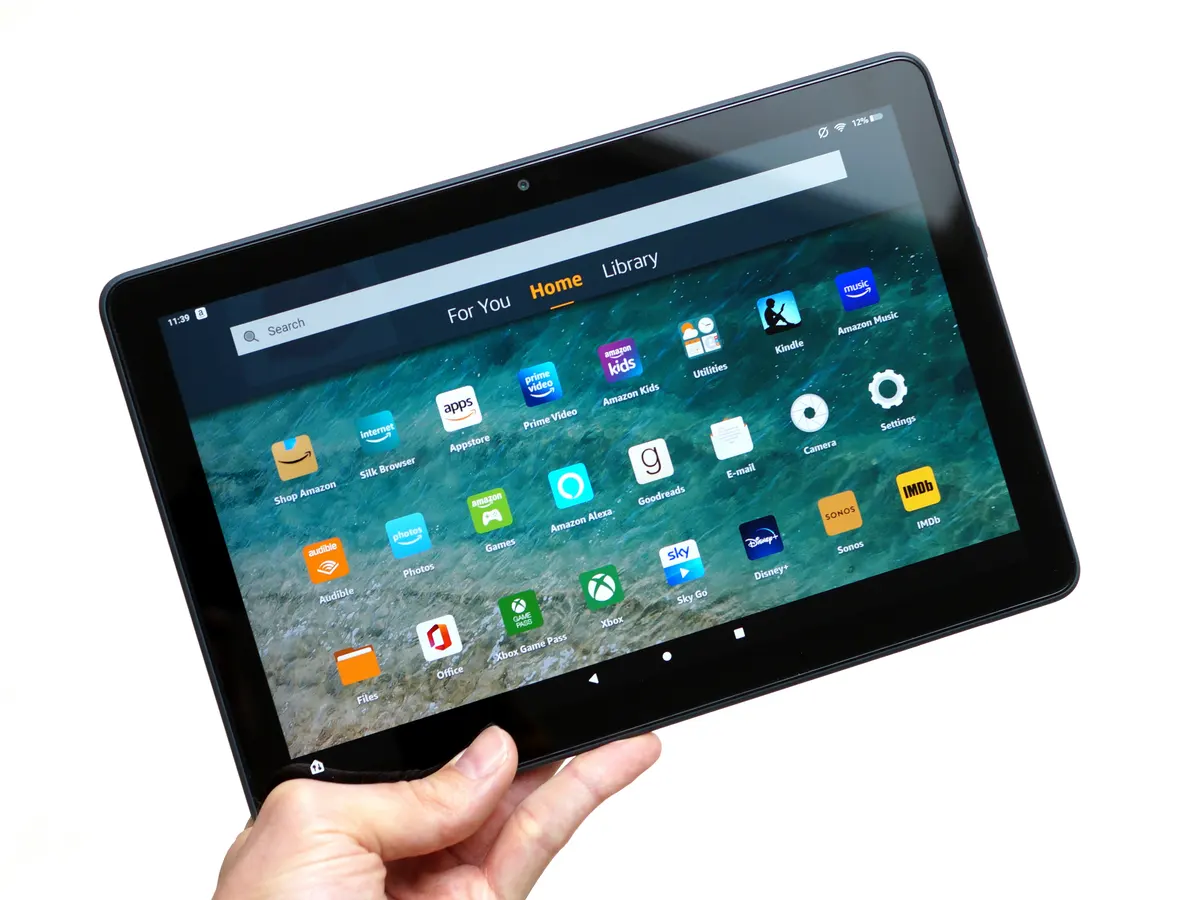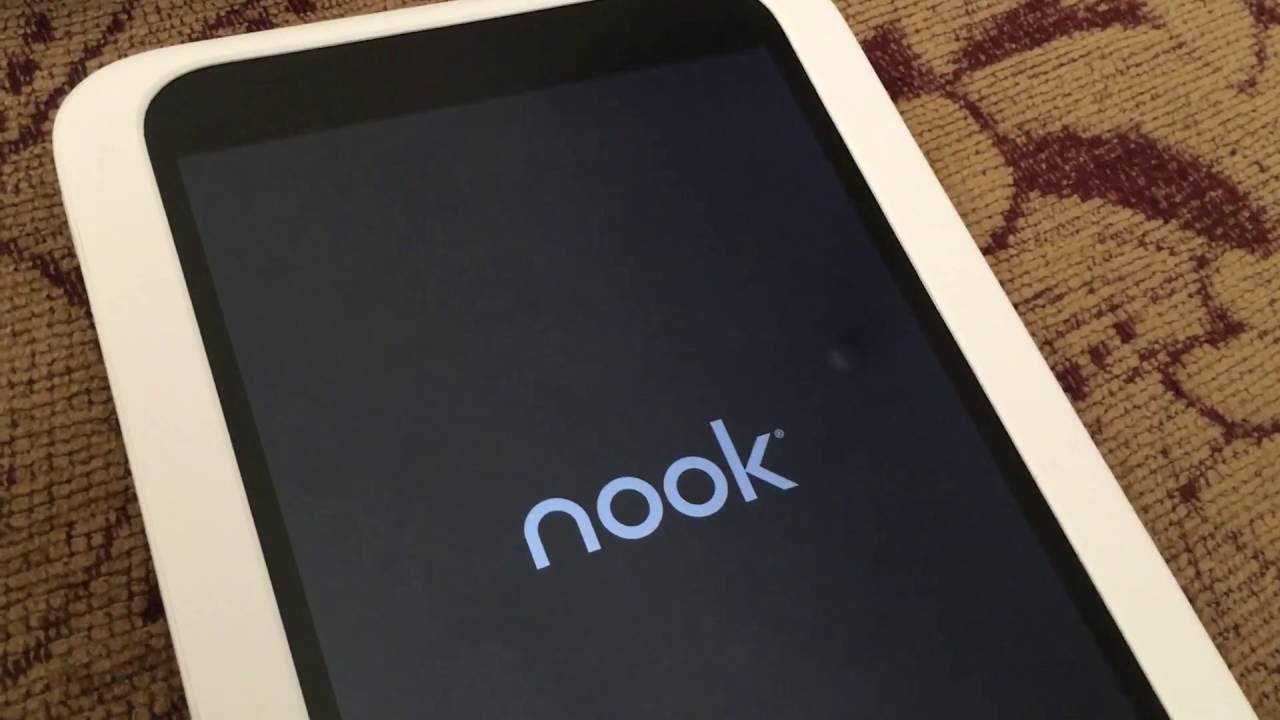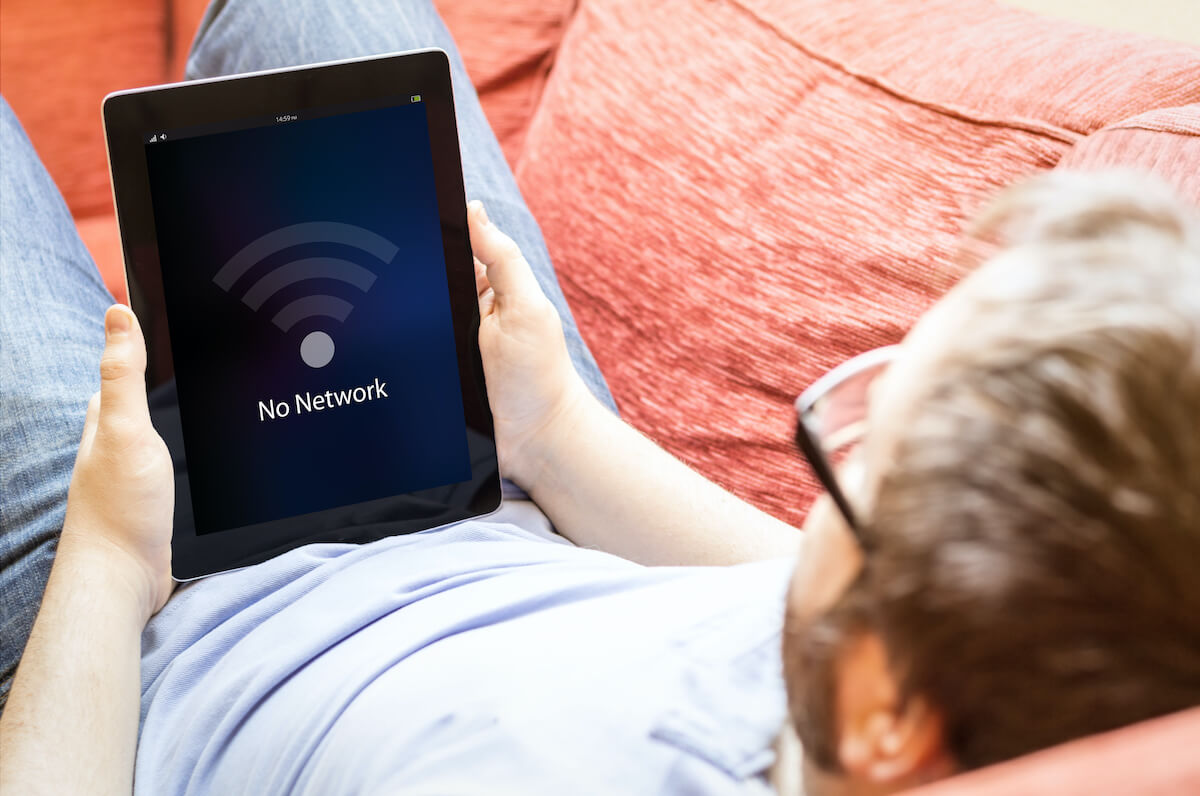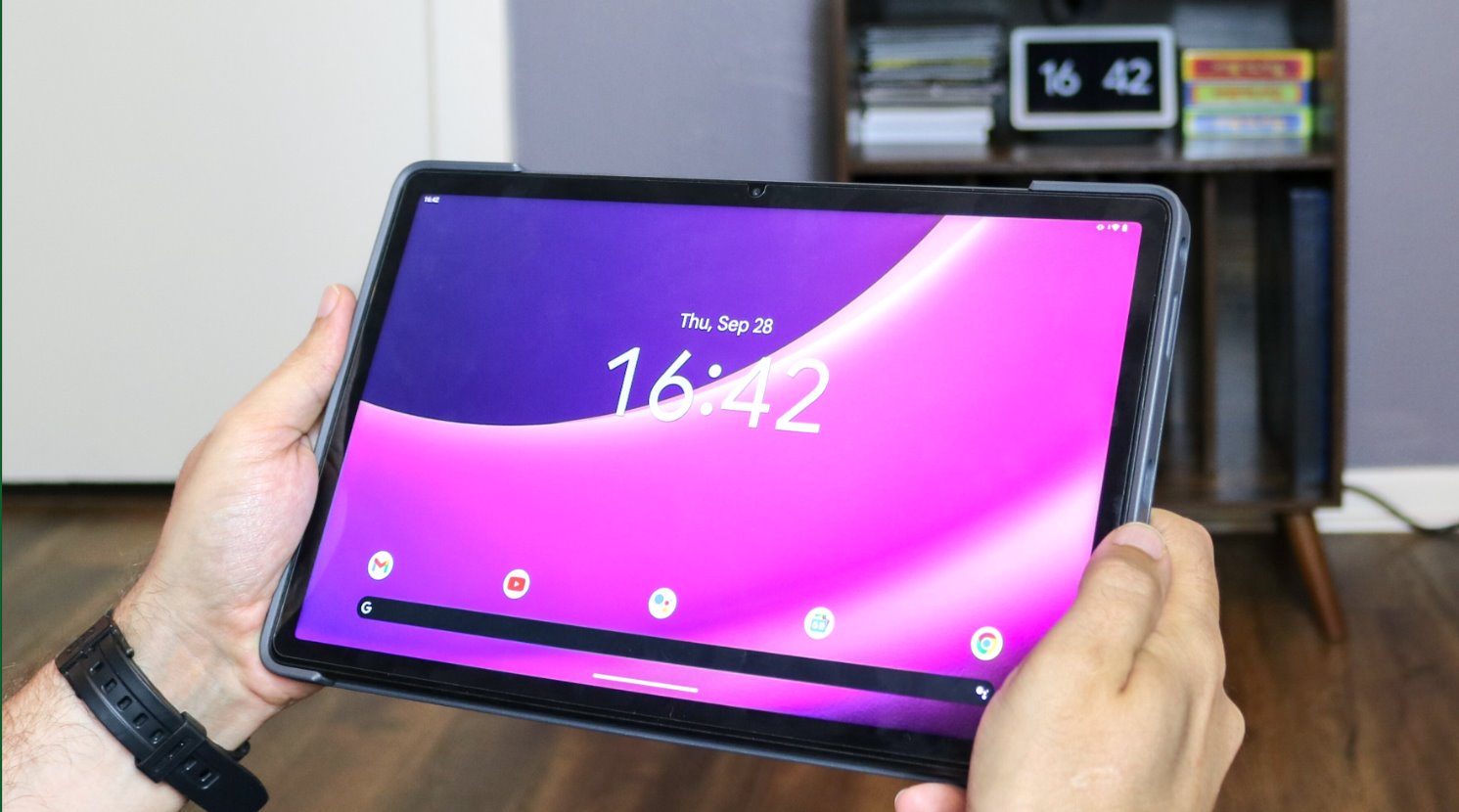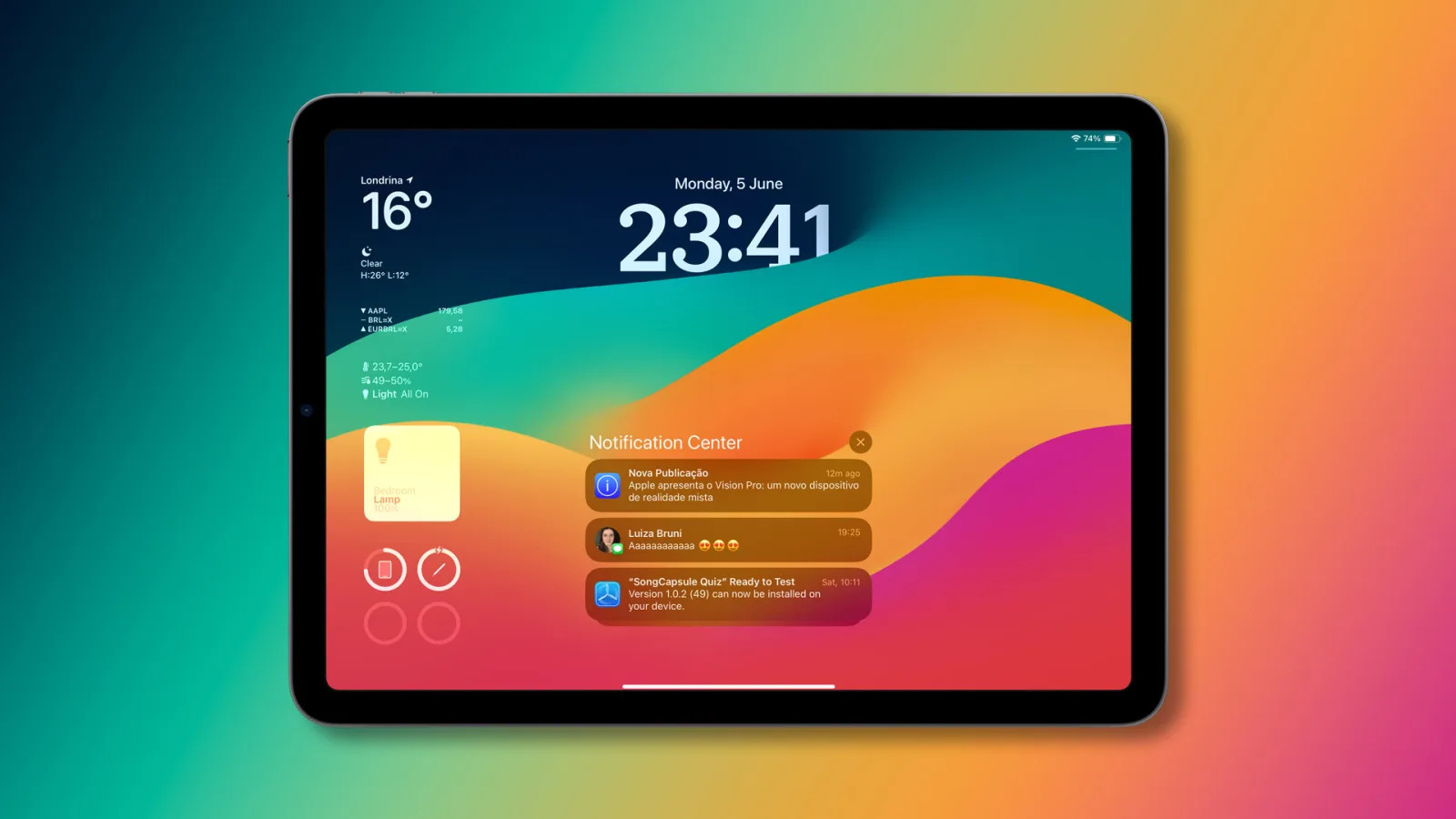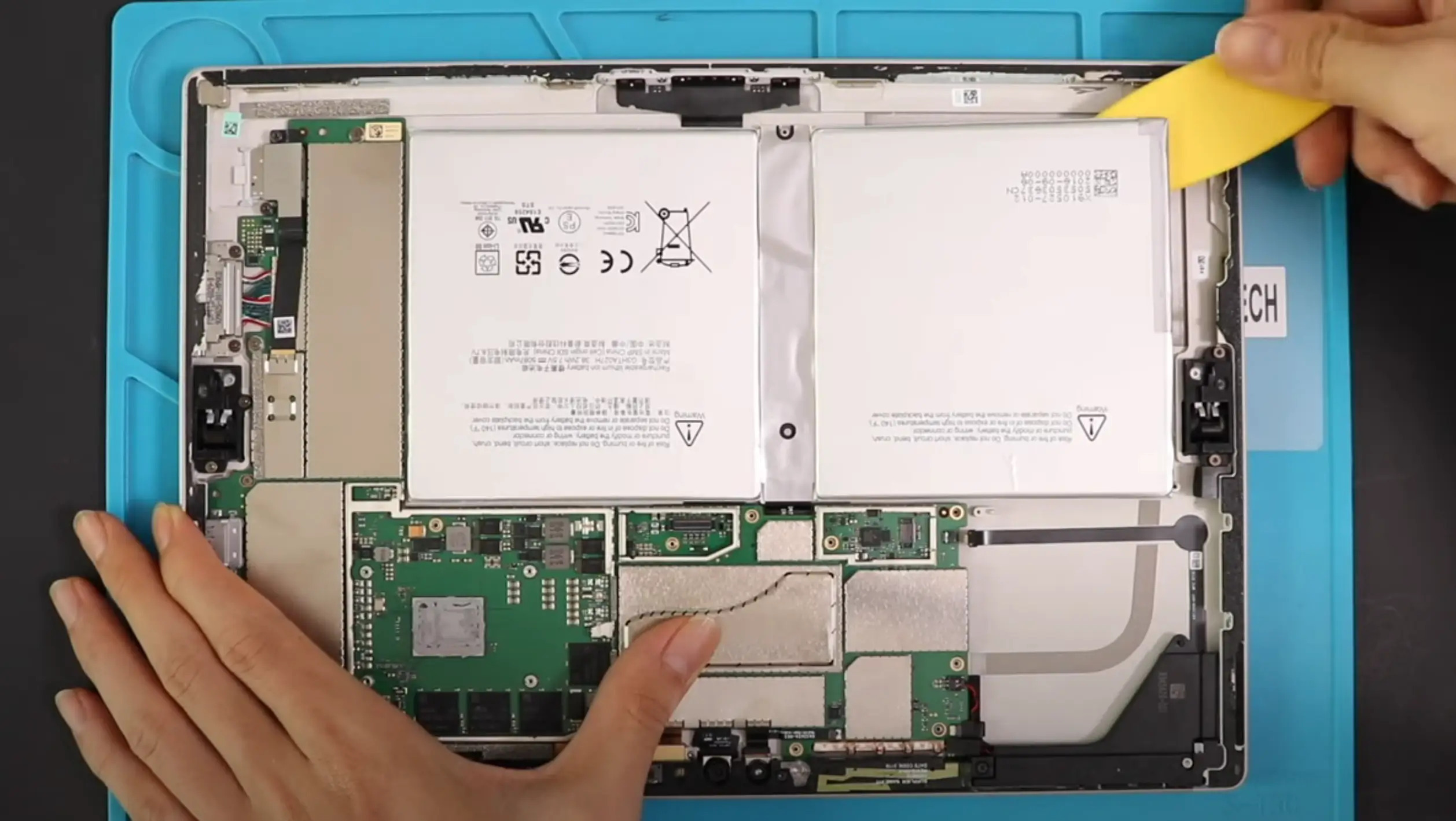Introduction
Welcome to the digital age, where staying connected is of utmost importance. Our tablets have become integral parts of our lives, helping us work, study, and stay entertained. However, it can be incredibly frustrating when our tablets keep losing their Wi-Fi connection.
There are few things more frustrating than trying to stream a movie or complete an important task, only to be interrupted by the dreaded Wi-Fi dropout. So, why does this happen? And what can be done to fix it?
In this article, we will explore the possible causes of your tablet’s Wi-Fi connection issues and offer some solutions to help you resolve them. Whether you’re using an Android tablet, an iPad, or any other device, the tips and tricks outlined here should apply to most tablets on the market.
Before we dive into the solutions, it’s essential to understand the potential causes of these frustrating Wi-Fi connection problems. By identifying the root cause, you’ll be better equipped to address the issue and minimize any further disruptions to your online activities.
Possible Causes of Wi-Fi Connection Issues
There are several factors that can contribute to your tablet losing its Wi-Fi connection. Here are some of the most common causes:
- Interference from Other Devices: Other electronic devices in your vicinity, such as cordless phones, microwaves, or even neighboring Wi-Fi networks, can interfere with your tablet’s Wi-Fi signal. This interference can result in a weak or unreliable connection.
- Distance from the Router: The further you are from your Wi-Fi router, the weaker the signal will be. If you notice that your tablet loses Wi-Fi connection when you’re in a specific part of your home or office, it could be due to the distance between your device and the router. Walls, furniture, and other obstacles can also weaken the signal.
- Router Issues: Problems with your router can cause Wi-Fi connectivity problems. Issues like outdated firmware, overheating, or incorrect settings can lead to intermittent or dropped connections.
- Software or Firmware Issues: The software or firmware on your tablet may have bugs or compatibility issues that could be causing the Wi-Fi disconnections. Software updates can often resolve these problems, so make sure your tablet is running on the latest version.
- Wi-Fi Sleep Policy: Some tablets have a feature called “Wi-Fi Sleep Policy” that conserves battery by automatically turning off Wi-Fi when the device is idle. While this can be useful for preserving battery life, it can also cause the Wi-Fi connection to drop unexpectedly.
Identifying the underlying cause of your tablet’s Wi-Fi connection issues is the first step toward finding a solution. Now that we’ve explored the potential causes, let’s dive into some practical troubleshooting steps you can take to restore and maintain a stable Wi-Fi connection on your tablet.
Interference from Other Devices
One of the common causes of Wi-Fi connection issues on your tablet is interference from other devices. Many electronic devices operate on similar frequencies as Wi-Fi, which can result in signal interference and a weakened connection. Here’s what you need to know about dealing with interference:
Identify and Remove Sources of Interference: Begin by identifying any potential sources of interference near your tablet and Wi-Fi router. Cordless phones, microwave ovens, baby monitors, and Bluetooth devices can all disrupt Wi-Fi signals. Try moving these devices away from your router or your tablet to minimize interference.
Change to a Less Crowded Wi-Fi Channel: Wi-Fi networks operate on different channels within a specific frequency band. If you’re experiencing interference from nearby Wi-Fi networks, you can change the channel your router uses to a less crowded one. Access your router’s settings through your tablet’s web browser, and look for the Wi-Fi channel option. Experiment with different channels to find the one that offers the best performance.
Use 5GHz Wi-Fi (if supported): Most Wi-Fi routers offer both 2.4GHz and 5GHz frequency bands. While the 2.4GHz band is more common, it is also more susceptible to interference from other devices. If your tablet supports it, switch to the less congested 5GHz band for a more stable connection.
Position Your Router Strategically: Ensure that your Wi-Fi router is placed in a central location within your home or office. Avoid positioning it near walls or inside cabinets, as these can obstruct the signal. Consider using Wi-Fi range extenders or mesh systems to improve coverage in areas where the Wi-Fi signal is weak.
Upgrade Your Wi-Fi Router: If you continue to experience significant interference issues despite trying the above steps, it might be time to consider upgrading your Wi-Fi router to a more advanced model. Newer routers often offer improved signal strength and better interference handling capabilities.
By taking steps to reduce interference from other devices, you can significantly improve your tablet’s Wi-Fi connection stability. However, if the interference problem persists, try implementing the solutions we’ll discuss in the upcoming sections.
Distance from the Router
The distance between your tablet and the Wi-Fi router can have a significant impact on the strength and stability of your Wi-Fi connection. When your tablet is too far away from the router, the signal may weaken, leading to frequent disconnections. Here’s what you can do to address this issue:
Reposition Your Tablet: If you’re experiencing Wi-Fi connection issues, try bringing your tablet closer to the router. Sometimes, simply repositioning your device can provide a stronger and more reliable Wi-Fi signal. Experiment with different locations to find the optimal spot for your tablet’s Wi-Fi performance.
Remove Obstacles: Physical barriers like walls, furniture, and appliances can interfere with Wi-Fi signals and reduce signal strength. Try to eliminate or minimize the number of obstacles between your tablet and the router. Keep in mind that Wi-Fi signals can pass through walls and objects, but their strength diminishes as they encounter more obstacles.
Consider Wi-Fi Range Extenders: If your tablet is located in a part of your home or office that is far from the router, you can consider using Wi-Fi range extenders. These devices amplify and extend the Wi-Fi signal, allowing you to access the internet from farther away. Place the range extender strategically between the router and your tablet to improve signal strength in that area.
Upgrade to a Mesh Wi-Fi System: Mesh Wi-Fi systems are a great solution for large homes or offices with multiple rooms. They consist of multiple nodes that work together to provide seamless coverage and eliminate dead spots. By deploying a mesh Wi-Fi system, you can ensure a strong and consistent Wi-Fi signal throughout your premises, even in areas far from the main router.
Optimize Wi-Fi Channel: If you live in an apartment building or densely populated area, you may experience interference from neighboring Wi-Fi networks. Use the Wi-Fi analyzer tool to identify the least congested channel and set your router to use that channel. This can help reduce interference and improve Wi-Fi performance in your vicinity.
By taking these steps to address the distance between your tablet and the router, you can significantly improve the stability and strength of your Wi-Fi connection. However, if you’re still encountering issues, continue reading for additional troubleshooting solutions.
Router Issues
Router issues can often be the culprit behind Wi-Fi connection problems on your tablet. If your tablet keeps losing its Wi-Fi connection, it’s essential to investigate and address any potential problems with your router. Here are some common router issues to consider:
Outdated Firmware: Router manufacturers regularly release firmware updates to fix bugs, improve performance, and enhance security. Outdated firmware can cause various connectivity issues, including intermittent Wi-Fi connections. Check your router’s manufacturer website or the router settings to see if a firmware update is available. If so, follow the instructions to update your router’s firmware to the latest version.
Overheating Router: Routers generate heat during operation, and excessive heat can lead to performance issues and even hardware failure. Ensure that your router is adequately ventilated and not placed in a confined space. Consider using a cooling pad or fan to keep the router’s temperature in check. If your router feels excessively hot to the touch, try power cycling it by turning it off and unplugging it for a few minutes before turning it back on.
Configuring Router Settings: Incorrect router settings can also result in Wi-Fi connection problems. Access your router’s settings through your tablet’s web browser by entering the router’s IP address. Ensure that the settings are configured correctly, including the Wi-Fi encryption type (e.g., WPA2), password, and network channel. Consult your router’s user manual or the manufacturer’s website for guidance on configuring the settings properly.
Router Placement: The physical placement of your router can significantly affect Wi-Fi signal strength. Ensure that your router is placed in a central location in your home or office to maximize coverage. Ideally, it should be elevated and positioned away from walls, electronic devices, and obstructions. Consider using a Wi-Fi range extender or mesh system to extend coverage in areas where the signal is weak.
Restart Your Router: Sometimes, simply restarting your router can resolve temporary issues and improve Wi-Fi performance. Power off your router, unplug it from the power source, wait for about 30 seconds, and then plug it back in. Allow the router to boot up fully and reconnect to the internet before testing your tablet’s Wi-Fi connection again.
By addressing router issues, such as outdated firmware, overheating, and incorrect settings, you can significantly improve the stability and reliability of your tablet’s Wi-Fi connection. If the router-related solutions do not resolve the problem, continue reading for further troubleshooting steps.
Software or Firmware Issues
Software or firmware issues on your tablet can also contribute to Wi-Fi connection problems. Bugs, compatibility issues, or outdated software/firmware can cause intermittent or dropped Wi-Fi connections. Here are some steps you can take to address software or firmware-related issues:
Check for Software Updates: Ensure that your tablet is running on the latest software version. Software updates often include bug fixes, performance improvements, and enhanced compatibility. Go to your tablet’s settings and look for the “Software Update” or “System Update” option. If an update is available, follow the on-screen instructions to download and install it.
Restart Your Tablet: Sometimes, a simple restart can resolve software-related glitches that might be affecting your Wi-Fi connection. Power off your tablet, wait for a few seconds, and then turn it back on. This will clear temporary files and refresh the software, potentially resolving any issues that were causing Wi-Fi connectivity problems.
Reset Network Settings: Resetting your tablet’s network settings can help resolve various connectivity issues. This process will remove saved Wi-Fi networks, Bluetooth pairings, and VPN settings. To reset network settings, go to your tablet’s settings, look for the “Network & Internet” or “Connections” section, and find the option to “Reset network settings.” Keep in mind that you’ll need to re-enter Wi-Fi passwords and set up Bluetooth connections after this reset.
Factory Reset: If the previous steps don’t resolve the Wi-Fi connection problems, you may consider performing a factory reset on your tablet. This will erase all data and settings, returning the device to its original factory state. Ensure that you back up any important data before proceeding. To perform a factory reset, go to your tablet’s settings, look for the “System” or “General Management” section, and find the option to “Reset” or “Factory Reset.” Follow the on-screen instructions to initiate the process.
Contact Support or Manufacturer: If you’ve tried all the above steps and are still experiencing Wi-Fi connection issues on your tablet, it may be time to reach out to the support team or the tablet’s manufacturer for further assistance. They may be able to offer additional troubleshooting steps or suggest specific solutions for your tablet model.
By addressing software or firmware issues through software updates, restarts, resetting network settings, or even a factory reset, you can potentially resolve Wi-Fi connection problems related to your tablet’s software. If the issues persist after trying these steps, continue reading for additional solutions to tackle Wi-Fi connection problems.
Wi-Fi Sleep Policy
Many tablets have a feature called “Wi-Fi Sleep Policy” that automatically turns off Wi-Fi connectivity when the device is idle for a certain period. While this feature can help conserve battery life, it can also cause unexpected Wi-Fi disconnections. Here’s how you can adjust or disable the Wi-Fi sleep policy on your tablet:
Open Wi-Fi Sleep Policy Settings: Go to the settings menu on your tablet and look for the “Wi-Fi” or “Network” section. Find the option labeled “Wi-Fi Sleep Policy” or similar.
Adjust the Sleep Policy: In the Wi-Fi Sleep Policy settings, you will have different options to choose from. Common options include “Never”, “After 15 minutes of inactivity”, or “When screen is off.” Select the option that best suits your needs. By setting the sleep policy to “Never,” your tablet’s Wi-Fi connection will remain active even when the device is idle.
Disable Wi-Fi Optimization: Some tablets may feature an additional setting called “Wi-Fi Optimization” or “Smart Network Switch.” This setting automatically switches between Wi-Fi and mobile data to provide a seamless internet experience. However, this can occasionally cause Wi-Fi disconnections. Disable this feature if it is enabled.
Use Battery Saver Mode Wisely: When your tablet’s battery level is low, it might automatically switch to battery saver or power-saving mode. These modes often limit certain device features, including Wi-Fi connectivity, to conserve battery. If you notice Wi-Fi connection issues while in battery saver mode, consider connecting your tablet to a power source or disabling battery saver temporarily to ensure a stable Wi-Fi connection.
Keep the Screen Awake: Some tablets have an option to keep the screen awake while connected to Wi-Fi. This prevents the Wi-Fi connection from being interrupted when the screen turns off due to inactivity. Look for options like “Keep Screen Awake” or “Wi-Fi Lock” in your tablet’s display or Wi-Fi settings.
By adjusting the Wi-Fi Sleep Policy settings or disabling certain power-saving features, you can prevent your tablet from automatically disconnecting from Wi-Fi and enjoy a more consistent online experience. However, if you’re still facing Wi-Fi connection problems, continue reading for additional troubleshooting steps.
Solution 1: Restart the Device
When you’re experiencing Wi-Fi connection issues on your tablet, one of the simplest yet effective solutions is to restart the device. Restarting can help resolve temporary glitches, refresh the software, and establish a stable connection. Here’s how you can restart your tablet:
Option 1: Software Restart: On most tablets, you can initiate a software restart by pressing and holding the power button until a menu appears. Then, select the “Restart” or “Reboot” option from the menu. The tablet will shut down and restart automatically.
Option 2: Hard Restart: If your tablet is frozen or unresponsive, a hard restart may be required. To perform a hard restart, press and hold the power button and the volume down button simultaneously for about 10-20 seconds. This should force the tablet to power off and restart.
Once the tablet has restarted, wait for it to fully boot up and establish a Wi-Fi connection. Check if the Wi-Fi connection remains stable and if the previous connectivity issues have been resolved.
If the Wi-Fi connection issues persist after a restart, proceed to the next troubleshooting solution. Restarting is often an effective first step, but in some cases, further actions may be necessary to resolve the problem.
Solution 2: Forget and Reconnect to the Wi-Fi Network
If your tablet keeps losing its Wi-Fi connection, a common troubleshooting step is to forget the Wi-Fi network and then reconnect to it. This can help resolve any temporary network-related issues and establish a fresh and stable connection. Follow these steps to forget and reconnect to the Wi-Fi network:
Step 1: Access Wi-Fi Settings: Open the settings menu on your tablet and navigate to the “Wi-Fi” or “Network” section. This is where you can manage your Wi-Fi connections.
Step 2: Forget the Wi-Fi Network: In the Wi-Fi settings, you should see a list of available networks. Locate the Wi-Fi network that you’re experiencing issues with and tap on it. A menu will appear with options related to the network. Look for the option to “Forget” or “Remove” the network and tap on it to disconnect your tablet from the network and remove its saved settings.
Step 3: Reconnect to the Wi-Fi Network: After forgetting the network, you can now reconnect to it. Tap on the name of the Wi-Fi network from the list of available networks. Enter the password for the network if prompted. Make sure to enter the correct password to establish a successful connection.
Wait for your tablet to connect to the Wi-Fi network and ensure that the connection remains stable. Test your tablet’s internet connection and verify if the Wi-Fi issues have been resolved.
If forgetting and reconnecting to the Wi-Fi network doesn’t resolve the problem, continue reading for further troubleshooting solutions to address the Wi-Fi connection issues on your tablet.
Solution 3: Reset Network Settings
If you’re still experiencing Wi-Fi connection issues on your tablet, resetting the network settings can help resolve any underlying configuration problems. Resetting the network settings will remove saved Wi-Fi networks, Bluetooth pairings, and VPN settings. Here’s how you can reset the network settings on your tablet:
Step 1: Open Network Settings: Navigate to the settings menu on your tablet and look for the “Network & Internet” or “Connections” section. This is where you can manage your network settings.
Step 2: Find Reset Network Settings: Scroll through the options and find the option to “Reset network settings” or something similar. It may be located under the “Advanced” or “More” settings.
Step 3: Confirm Network Reset: When you select the “Reset network settings” option, a confirmation prompt will appear. Read the information carefully, as this action will remove all network-related settings on your tablet. If you’re sure you want to proceed, confirm the reset.
After the network settings reset, your tablet will restart. Once it boots up again, you’ll need to reconnect to your Wi-Fi network and re-enter the password. You may also need to set up any Bluetooth connections or VPN settings again.
Test your Wi-Fi connection and observe if the connection stays stable and consistent. Resetting the network settings can often resolve various connectivity issues. However, if the Wi-Fi problems persist, proceed to the next troubleshooting solution.
Solution 4: Update Software/Firmware
If your tablet continues to experience Wi-Fi connection issues, it’s essential to ensure that your software and firmware are up to date. Software updates often include bug fixes, security patches, and performance improvements that can address known issues, including Wi-Fi connectivity problems. Here are the steps to update your software and firmware:
Step 1: Check for Software Updates: Open the settings menu on your tablet and navigate to the “Software Update” or “System Update” section. Depending on your tablet model and operating system, this option may be located under “About Device” or “General” settings.
Step 2: Check for Firmware Updates: In addition to software updates, your tablet’s manufacturer may release firmware updates specifically for the Wi-Fi connectivity. Look for firmware updates in the same “Software Update” or “System Update” section, as mentioned earlier.
Step 3: Download and Install Updates: If there are available updates, follow the on-screen instructions to download and install them. Make sure you have a stable internet connection, preferably through Wi-Fi, to download the updates smoothly. The update process may take some time, so ensure that your tablet has sufficient battery life or is connected to a power source.
Once the software and firmware updates are installed, your tablet will restart if required. After it boots up again, test the Wi-Fi connection to see if the issues have been resolved. The updated software and firmware may introduce improvements that address connectivity problems and provide a more stable Wi-Fi experience.
If updating the software and firmware doesn’t fix the Wi-Fi connection issues, proceed to the next troubleshooting solution for further steps to resolve the problem.
Solution 5: Adjust Wi-Fi Sleep Policy
Wi-Fi Sleep Policy is a feature on many tablets that automatically turns off Wi-Fi when the device is idle for a specified period. While this feature helps conserve battery life, it can also cause disruptions in the Wi-Fi connection. Adjusting the Wi-Fi Sleep Policy settings can help resolve Wi-Fi connection issues. Here’s how you can adjust the Wi-Fi Sleep Policy:
Step 1: Access Wi-Fi Settings: Open the settings menu on your tablet and navigate to the “Wi-Fi” or “Network” section. This is where you can manage your Wi-Fi connections.
Step 2: Find Wi-Fi Sleep Policy: Look for an option related to Wi-Fi Sleep Policy, such as “Keep Wi-Fi on during sleep” or “Wi-Fi Sleep settings.” The exact terminology may vary depending on your tablet’s manufacturer and operating system version.
Step 3: Adjust the Sleep Policy: In the Wi-Fi Sleep Policy settings, you’ll typically find different options to choose from. These include “Never”, “After 15 minutes of inactivity”, or “When screen is off”. By setting the policy to “Never”, you can keep the Wi-Fi connection active even when the tablet is idle.
Disable Wi-Fi Optimization: Some tablets may also have a Wi-Fi optimization or smart network switch feature that automatically switches between Wi-Fi and mobile data to provide a seamless internet experience. However, this can sometimes lead to Wi-Fi disconnections. Disable this feature in your tablet’s settings if it is enabled.
Keep the Screen Awake: Check if your tablet has an option to keep the screen awake while connected to Wi-Fi. This prevents the Wi-Fi connection from being interrupted when the screen turns off due to inactivity. Look for options like “Keep Screen Awake” or “Wi-Fi Lock” in your tablet’s display or Wi-Fi settings.
Adjusting the Wi-Fi Sleep Policy settings can prevent your tablet from automatically disconnecting from Wi-Fi and provide a more stable connection. Make the necessary changes and observe if the Wi-Fi connection remains reliable and consistent.
If adjusting the Wi-Fi Sleep Policy does not resolve the issue, continue reading for additional troubleshooting steps to troubleshoot Wi-Fi connection problems.
Conclusion
Dealing with Wi-Fi connection issues on your tablet can be frustrating, but by understanding the possible causes and implementing the appropriate solutions, you can resolve these problems and enjoy a stable and reliable internet connection. In this article, we covered several potential causes of Wi-Fi connection issues, including interference from other devices, distance from the router, router issues, software or firmware problems, and Wi-Fi Sleep Policy settings.
Interference from other devices can disrupt the Wi-Fi signal, so it’s important to identify and remove sources of interference and optimize your Wi-Fi channel selection. Additionally, ensuring that your tablet is within a reasonable distance from the router and reducing physical obstructions can significantly improve the speed and stability of your Wi-Fi connection.
We also discussed the importance of addressing router issues, including updating firmware, preventing overheating, and ensuring correct configuration. Updating your tablet’s software and firmware can resolve known bugs and compatibility issues that may be causing Wi-Fi connection problems.
Adjusting the Wi-Fi Sleep Policy settings on your tablet can prevent Wi-Fi disconnections when your device is idle, and opting for a “Never” sleep policy can help maintain a continuous and reliable connection. You may also consider resetting network settings if other troubleshooting steps haven’t resolved the Wi-Fi issues.
Remember to try restarting your tablet as a quick and simple solution, as it can resolve temporary glitches and establish a fresh connection. Forgetting and reconnecting to the Wi-Fi network can also help resolve any network-related issues.
It’s important to note that not all solutions may apply to every tablet or specific situation. If you’ve exhausted these troubleshooting steps and are still experiencing Wi-Fi connection problems, it’s advisable to reach out to technical support or the tablet’s manufacturer for further assistance.
By implementing these solutions and creatively troubleshooting Wi-Fi connection issues, you can overcome the challenges and enjoy uninterrupted internet connectivity on your tablet.







